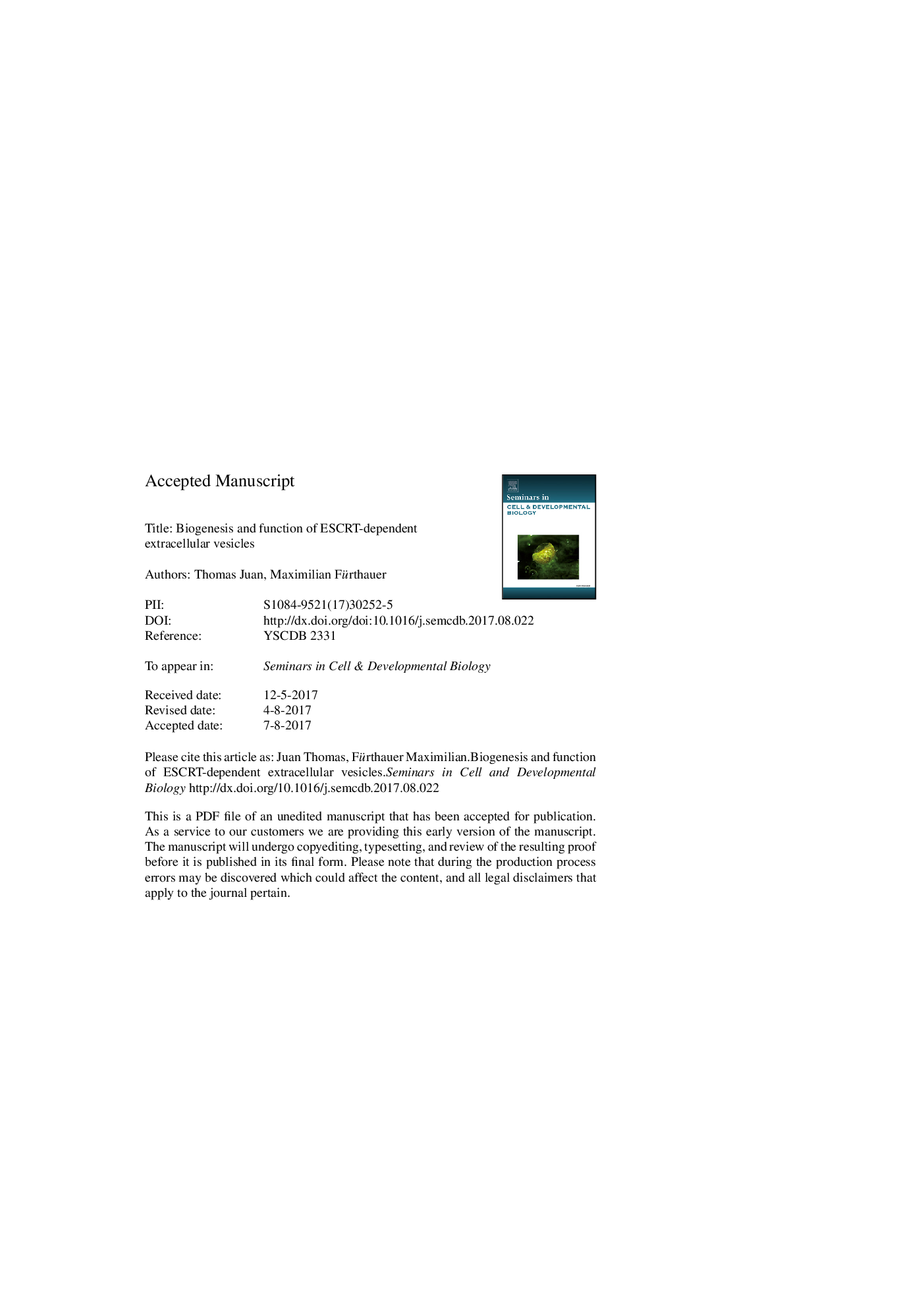| Article ID | Journal | Published Year | Pages | File Type |
|---|---|---|---|---|
| 8479785 | Seminars in Cell & Developmental Biology | 2018 | 32 Pages |
Abstract
From bacteria to humans, cells secrete a large variety of membrane-bound extracellular vesicles. Only relatively recently has it however started to become clear that the exovesicular transport of proteins and RNAs is important for normal physiology and numerous pathological conditions. Extracellular vesicles can be formed through the release of the intralumenal vesicles of multivesicular endosomes as so-called exosomes, or through direct, ectosomal, budding from the cell surface. Through their ability to promote the bending of membranes away from the cytoplasm, the components of the Endosomal Sorting Complex Required for Transport (ESCRT) have been implicated in both exo- and ectosomal biogenesis. Studies of the ESCRT machinery may therefore provide important insights into the formation and function of extracellular vesicles. In the present review, we first describe the cell biological mechanisms through which ESCRT components contribute to the biogenesis of different types of extracellular vesicles. We then discuss how recent functional studies have started to uncover important roles of ESCRT-dependent extracellular vesicles in a wide variety of processes, including the transport of developmental signaling molecules and embryonic morphogenesis, the regulation of social behavior and host-pathogen interactions, as well as the etiology and progression of neurodegenerative pathologies and cancer.
Keywords
multivesicular endosomeALG-2 interacting protein XnSMaseMHCIIILVTSG101ESCRTISG15HSPGMVESNARENMJPMELEctosomeSUMOExosomeAβTCrIL-1βAPPAlixAnthrax Protective Antigenneutral sphingomyelinaseInterleukin-1βWinglessCupSHedgehogShhSIMPLEendoplasmic reticulumsonic hedgehogAnthrax lethal factorphosphatidylethanolamineendosomal sorting complex required for transportHeparan sulfate proteoglycanhuman immunodeficiency virusHIVextracellular vesicleamyloid-β proteinamyloid precursor proteinTumor susceptibility gene 101interferon-stimulated gene 15small ubiquitin-like modifierT-cell receptor
Related Topics
Life Sciences
Biochemistry, Genetics and Molecular Biology
Cell Biology
Authors
Thomas Juan, Maximilian Fürthauer,
